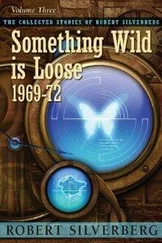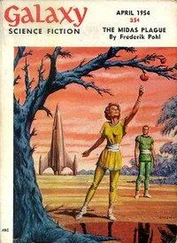Pohl, Frederik - The Gateway Trip
Здесь есть возможность читать онлайн «Pohl, Frederik - The Gateway Trip» весь текст электронной книги совершенно бесплатно (целиком полную версию без сокращений). В некоторых случаях можно слушать аудио, скачать через торрент в формате fb2 и присутствует краткое содержание. Жанр: Старинная литература, на английском языке. Описание произведения, (предисловие) а так же отзывы посетителей доступны на портале библиотеки ЛибКат.
- Название:The Gateway Trip
- Автор:
- Жанр:
- Год:неизвестен
- ISBN:нет данных
- Рейтинг книги:4 / 5. Голосов: 1
-
Избранное:Добавить в избранное
- Отзывы:
-
Ваша оценка:
- 80
- 1
- 2
- 3
- 4
- 5
The Gateway Trip: краткое содержание, описание и аннотация
Предлагаем к чтению аннотацию, описание, краткое содержание или предисловие (зависит от того, что написал сам автор книги «The Gateway Trip»). Если вы не нашли необходимую информацию о книге — напишите в комментариях, мы постараемся отыскать её.
The Gateway Trip — читать онлайн бесплатно полную книгу (весь текст) целиком
Ниже представлен текст книги, разбитый по страницам. Система сохранения места последней прочитанной страницы, позволяет с удобством читать онлайн бесплатно книгу «The Gateway Trip», без необходимости каждый раз заново искать на чём Вы остановились. Поставьте закладку, и сможете в любой момент перейти на страницу, на которой закончили чтение.
Интервал:
Закладка:
Hardly any of the planets were really Earth-like, though.
There were a lot of tests for that sort of thing that could be applied from a considerable distance. Temperature sensing, for one. Organic life didn't seem to develop except where water could exist in its liquid phase, which was to say in the narrow, 100-degree band between about 270 and 370 Kelvin. At lower temperatures the stuff was useless ice. At higher ones water wasn't usually there at afl, because the heat vaporized it and the sunlight-from whatever sun was nearby-split the hydrogen out of the water molecule and it was lost into space.
That meant that each star had a quite narrow area of possible planetary orbits that might be worth investigating. As planets didn't care whether or not they were going to be hospitable to life when they were condensing out of the interstellar gases, most of them took orbits inside that life zone, or in the cold spaces outside it.
Most alien life, like most Earthly life, was based on the chemistry of the carbon atoms. Carbon was the best of all possible elements for forming useful long-chain compounds, and happily it is so frequently found that it is the fourth most common element in the universe. Most alien life had something like DNA, too. That
wasn't for any panspermian reason, but simply because systems like DNA provided a cheap and efficient way for organisms to replicate themselves.
So most living things followed certain basic guidelines. That was probably because they all started in pretty much the same way, since there is a timetable to the development of life. The first step is just chemistry: inorganic chemicals get forced to react with each other, under the spur of some sort of externally supplied energy-usually the light from their nearby star. Then crude, single-celled little things appear. These are only factories whose raw materials are the other inorganic chemicals in the soup that surrounds them. They, too, use the energy of sunlight (or whatever) to process the inorganic chemicals into more of themselves, and that's about all they do for a living. Since they are photosynthetic, you might call them plants.
Then these primitive "plants" themselves turn out to be pretty rich sources of assimilable chemicals. Since they've gone to the trouble of concentrating the more appetizing inorganic compounds into a preprocessed form, it is only a question of time until some of them learn a new diet. These new ones don't eat the raw materials of the environment. They eat their own weaker, more primitive cousins. Call this new batch of creatures "animals." The first animals aren't usually much. They consist of a mouth at one end, an anus at the other, and some sort of processing system in between. That's all they are. But then, that's all they need to be to feast on their neighbors.
Then things get more complicated.
Evolution begins to happen. The fittest survive, pretty much the way Charles Darwin figured it out as he fondled his captive finches on board the Beagle. The plants go on making appetizing chemicals for the animals to feast on, and the animals go on feasting on the plants and on each other-but some plants accidentally develop traits that give their predators trouble, and so those plants survive; and some animals learn tricks to get around those defenses. Later generations of animals develop senses to locate their prey more
efficiently, and musculatures to catch it, and ultimately complex behavioral systems (like the web of a spider or the stalking of a great cat) that make their predation more and more successful. (Then, of course, the plants, or the herbivores, or the less successful predators begin to develop defense mechanisms of their own: the poisons in a shrub's leaf, the quills of a porcupine, the fleet legs of a gazelle.) The competition never stops getting more intense, and more sophisticated on all parts-until, finally, some of the creatures become "intelligent." But they take a lot longer to evolve . . . and it took the Gateway prospectors a lot longer to find any of them, too.
In the myriad worlds that the Heechee had explored-and to which the human Gateway prospectors followed them hundreds of thousands of years later-all those basics of the evolution of life were played out a thousand times, with a thousand variations. The variations were sometimes quite surprising. For instance, Earthly plants have one conspicuous trait in common: they don't move. But there wasn't any reason why that trait had to be universal, and in fact it wasn't. The Gateway prospectors foux~d bushes that rolled from place to place, setting roots down to one side and pulling them up on the other, like slow-motion tumble-weeds as they sought the richest soils and the best access to groundwater and the surest sunlight. Then, too, Earthly animals don't normally bother with photosynthesis. But in the seas of other worlds there were things like jellyfish that floated to the surface by day to generate their own hydrocarbons from the sun and the air, and then sank down to feast on algal things at night. Earthly corals stay in one place. Prospectors found some unearthly ones-or, at least, some unearthly things that looked more or less like corals-that flew apart into their component little animals when the coast was clear, to eat and mate, and then returned to form collective rockhard fortresses when the prowling marine predators approached.
Most of these things were useless to any prospector whose big interest was in making a fortune. A few were not. There was one
good feature to finding an organism that was worth something, and that was that it was an easy import. You didn't have to bring tons of material back to Gateway. All you had to do was bring enough of some plant or animal back to breed others back on Earth, since living things were glad to reproduce themselves for you anywhere.
The zoos of Earth began to expand, and so did Earth's aquaria, and its pet stores. Every fashionable family was sure to own its exotic windowbox of alien ferns, or its furry little pet from the planet of some other star.
Before the Gateway prospectors could make an honest buck in the pet trade, though, they had to find the living things in the first place. That wasn't easy. Even when life was apparently possible, sometimes it was there, and sometimes it was not. The way to check for that was to look for chemical signatures in the atmosphere. (Oh, yes, the hopefully life-bearing planet had to possess an atmosphere, too, but that wasn't a serious constraint. Most planets in the habitable zone did.) If the atmosphere turned out to contain reactive gases that hadn't reacted-say, if it held free oxygen, with reducing substances like carbon or iron somewhere availably around-then it
stood to reason that something must be continually replenishing those gases. That something was probably, in some sense, alive.
(Later on the prospectors found there were exceptions to these simple rules ... but not many.)
The very first planet that turned out to have living things on it was a solid ten when studied from orbit. Almost everything was there: blue skies, blue seas, fleecy white clouds and plenty of oxygen-meaning some antientropic (i.e., living) thing to keep it that way.
Prospectors Anatol and Sherba Mirsky and their partner, Leonie Tilden, slapped each other's backs in exultation as they prepared to land. It was their first mission-and they'd hit the jackpot right away.
Naturally they celebrated. They opened the one bottle of wine they'd brought along. Ceremonially they made a recording announcing their discovery, punctuating it with the pop of the wine cork. They called the planet New Earth.
Everything was going their way. They even thought it likely that they could figure out just where they were in the galaxy (a kind of knowledge usually hidden from the early Gateway prospectors, because there weren't any road signs on the way). But they had spotted the Magellanic Clouds in one direction and the Andromeda Nebula in another, and in still a third direction there was a tight, bright cluster that they were nearly sure was the Pleiades.
Читать дальшеИнтервал:
Закладка:
Похожие книги на «The Gateway Trip»
Представляем Вашему вниманию похожие книги на «The Gateway Trip» списком для выбора. Мы отобрали схожую по названию и смыслу литературу в надежде предоставить читателям больше вариантов отыскать новые, интересные, ещё непрочитанные произведения.
Обсуждение, отзывы о книге «The Gateway Trip» и просто собственные мнения читателей. Оставьте ваши комментарии, напишите, что Вы думаете о произведении, его смысле или главных героях. Укажите что конкретно понравилось, а что нет, и почему Вы так считаете.












